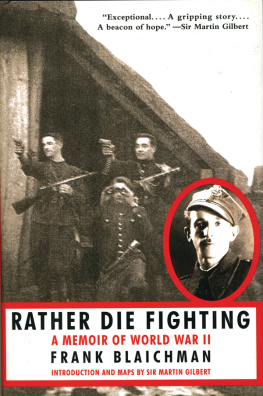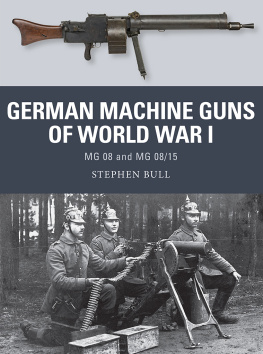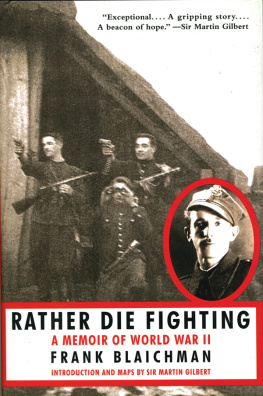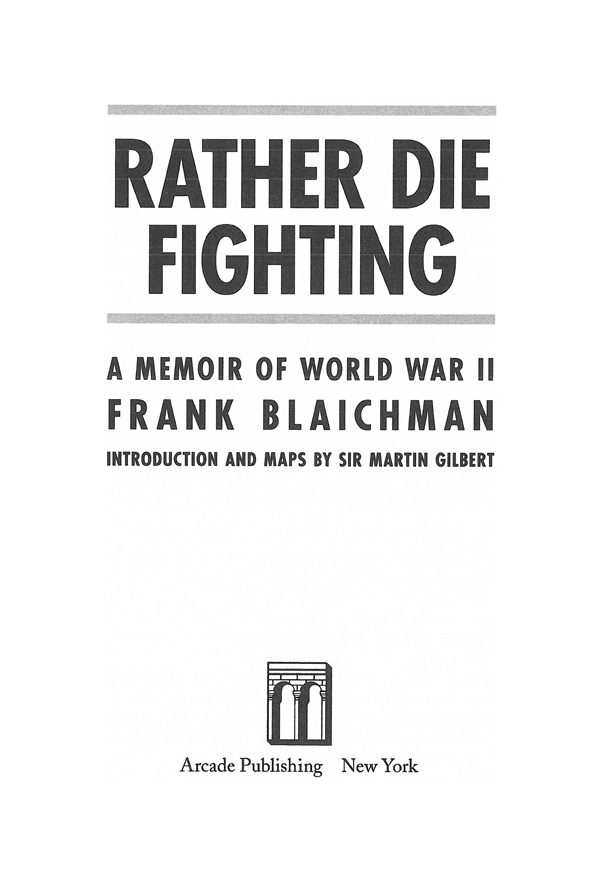
Copyright 2009, 2011 by Frank Blaichman
Introduction and maps copyright 2009, 2011 by Sir Martin Gilbert
All Rights Reserved. No part of this book may be reproduced in any manner without the express written consent of the publisher, except in the case of brief excerpts in critical reviews or articles. All inquiries should be addressed to Arcade Publishing, 307 West 36th Street, 11th Floor, New York, NY 10018.
Arcade Publishing books may be purchased in bulk at special discounts for sales promotion, corporate gifts, fund-raising, or educational purposes. Special editions can also be created to specifications. For details, contact the Special Sales Department, Arcade Publishing, 307 West 36th Street, 11th Floor, New York, NY 10018 or .
Arcade Publishing is a registered trademark of Skyhorse Publishing, Inc., a Delaware corporation.
www.skyhorsepublishing.com
10 9 8 7 6 5 4 3 2 1
Library of Congress Cataloging-in-Publication Data
Blaichman, Frank.
Rather die fighting: a memoir ofWorld War II/Frank Blaichman; inroduction and maps by Martin Gilbert.
p. cm.
Originally published: 2009.
Includes bibliographical references and index.
ISBN 978-1-61145-015-6 (pbk.: alk. paper)
1. Blaichman, Frank. 2. JewsPolandBiography. 3. World War, 1939-1945PolandPersonal narratives, Jewish. 4. World War, 1939-1945Jewish resistancePolandPersonal narratives. 5. Flolocaust, Jewish (1939-1945)PolandBiography. 6. PolandBiography. I.Title.
DS134.72.B55A3 2011
940.53T8092dc22
[B]
2011001615
Printed in the United States of America
Europe 1937
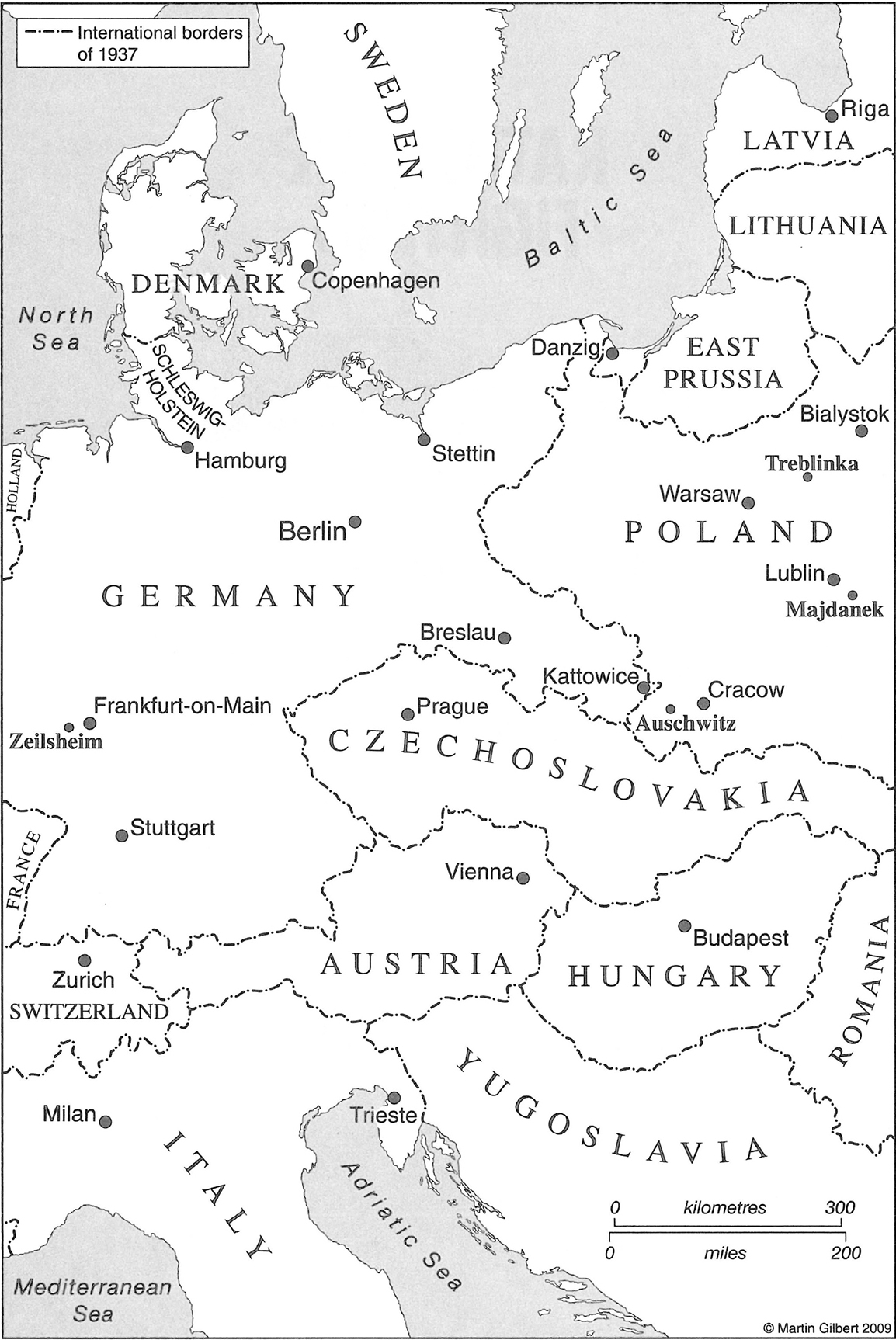
For my parents, brothers, and sisters,
who died decades before their time .
And for Cesia, who has given me a good life,
and for my children and grandchildren .
Central Poland
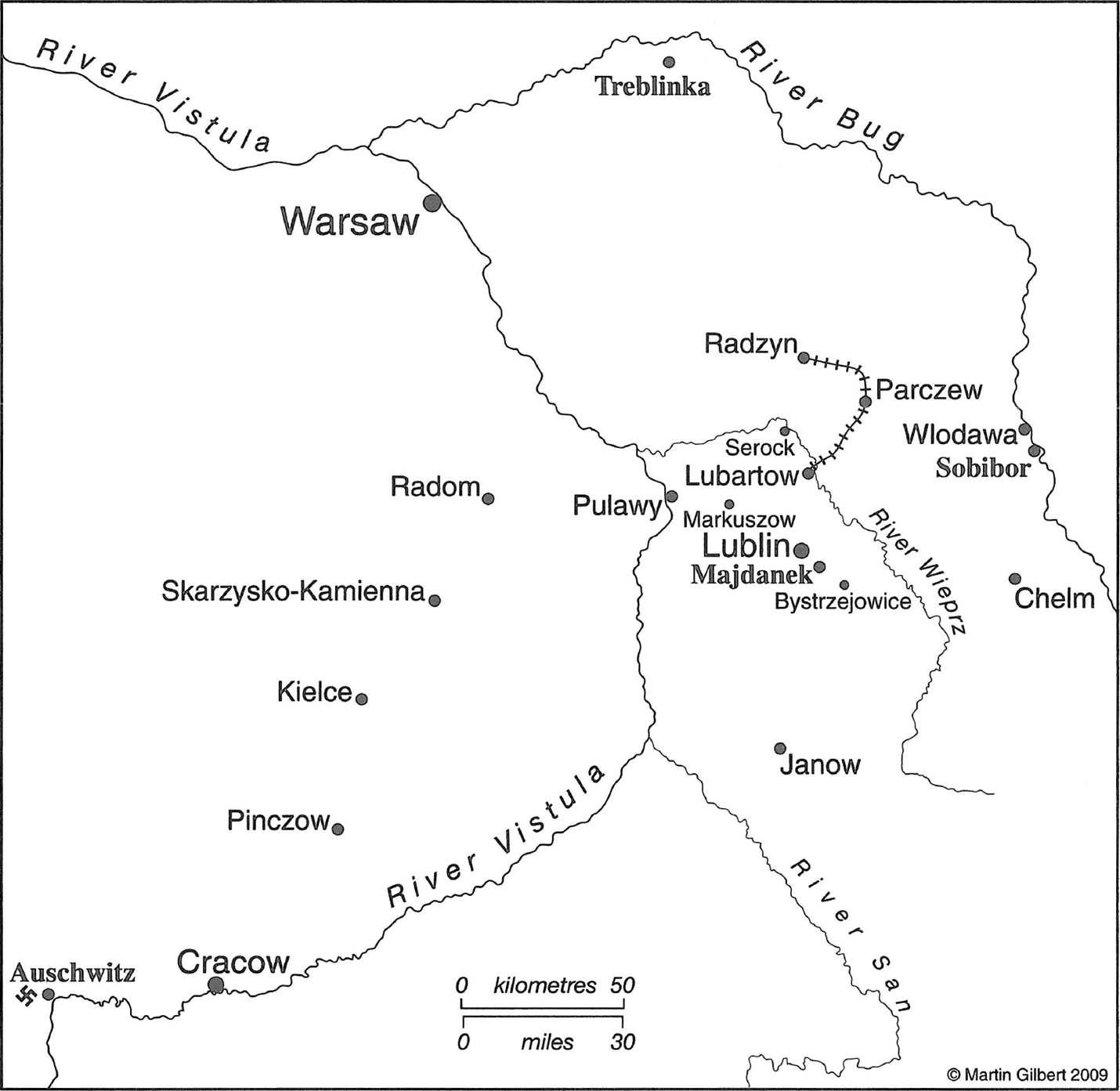
Between Parczew and Wlodawa

CONTENTS
INTRODUCTION
I T IS AN HONOR TO WRITE a few words of introduction to this exceptional memoir. The Holocaust was on such a vast scale that no amount of published recollections by survivors could ever tell the complete story. Each memoir adds an important element: an aspect of the narrative, an account of survival, a testimony to human suffering and endurance.
In this memoir, we learn a great deal about one of the neglected aspects of the Jewish experience during the Second World War: the acts of resistance carried out by those who found the means, and the will, to challenge the mighty German war machine and apparatus of destruction.
Frank Blaichman commanded a Jewish partisan platoon. These seven words, so simple, and at the same time so unusual, mask a story of drama and danger, a story of which the Jewish people can be proud.
I was fortunate to have traveled in the early 1980s in the regions where the action in this book takes place. While researching my book The Holocaust: The Jewish Tragedy , I went to Frank Blaichmans hometown of Kamionkatwelve miles north of the Polish city of Lublinand explored the forests where he had fought. In my Atlas of the Holocaust , I mapped many of the villages and woods where the action in this book takes place. I went deep into the forest, and found the remnants of some of the camps the author describes; I also sensed the hostilitysurviving to this dayof the local population to the Jews who had refused to accept deportation and death.
Frank Blaichman was sixteen years old when war broke out in 1939, with the German invasion of Poland. His first sight of war was the influx of Jewish refugees from Warsaw, which had been savagely bombed. Then came Polish soldiers, in full retreat. Shortly after German soldiers reached Kamionka, a group of local Hasidim was rounded up, given shovels, and made to dig ditches. Frank writes, As the Hasidim dug, the soldiers beat them with their rifle butts and made fun of them, cursing them, laughing at them when they fell. When the Hasidim finished digging the ditches, the soldiers made them fill them in again and went on beating them. I watched from a distance, shaken, and fantasized about taking revenge.
A teenagers fantasy was to become reality within three years. In September 1942, the Germans said they were going to move the Jews of Kamionka to nearby Lubartow, where a ghetto would be set up for all the Jews of the region. This promise of safety was a typical Nazi deception.
On the afternoon of October 8, 1942, it was learned that the deportation would take place the next day. Frank decided to escapea decision that led, ultimately, to his becoming a Jewish partisan. The greater portion of his gripping memoir is the story of his two years in the forest. Told with meticulous detail and powerful emotion, it deserves to become a classic account of Jewish resistance.
Skinny Frank, as he was known, had many brushes with the harsh reality of life in hiding in an occupied and hostile countryside. The Germans were a formidable and cruel adversary. On one occasion, after investigating the sound of German voices some way off, Frank and the small group with him returned to find that their underground bunkers had been attacked and everyone in them killed, seventy-five in all: We swore that we would avenge the deaths of our comrades. The group was reduced in number to twenty-five. But it never gave up. Among the enemies it faced were Polish collaborators, eager for the money the Germans would pay for each Jew betrayed. Those collaborators who were caught by the group were executed. The local population had to learn that the killing of Jews would not go unavenged.
Some Polish farmers were glad to help; they, too, were under occupation. Polish partisans of the Peoples Guard (later the Armia Ludowa, or Peoples Army) welcomed the Jewish partisans as fellow fighters, while allowing them to remain an independent Jewish group and to continue to protect Jews in hiding.
Each of the partisan missions described here is full of danger and drama. Each adds to our knowledge of what was achieved by these small groups of Jewish fighters. Each is a tribute to remarkable courage and endurance.
Disappointment and success, help and betrayal, went hand in hand. Death stalked the daily life of the brave youngsters who had become soldiers without an army, without an arsenal, and without the support of the local population. But they persevered. The forests became their bases and their homes. As their numbers grew, and as they worked alongside Polish partisan units, they made life increasingly difficult for the German occupiers. In May 1944, they took part in a major partisan battle, against German SS and Wehrmacht battalions and German Air Force units sent to destroy them. The account of that battle is one of the graphic high points of the memoir. So, too, is the sudden appearance of large numbers of German troops and tanks fleeing westward to avoid the advancing Red Army. For several hours, the danger was Russian artillery fire, as it pounded the retreating German forces. And then he saw a Russian colonel on horseback approaching through the meadow. When he greeted us in Russian, I knew the worst was over. We had survived.

